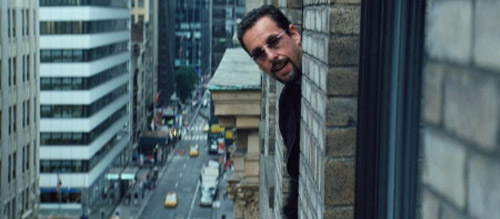10 Best Films 2020: Joseph Wade
5. I’m Thinking of Ending Things
I’m Thinking of Ending Things Review
Screenwriter-director Charlie Kaufman (Eternal Sunshine of the Spotless Mind) has long-held respect for his ginormous talents and the unique, arguably authorial imprint he leaves on each of his written features, but in I’m Thinking of Ending Things he has truly established himself as one of the great all-round filmmakers of his generation.
Led quite phenomenally on the screen by Jessie Buckley (Wild Rose) and Jesse Plemons (Game Night), who each break apart their own performances from scene to scene by offering glimpses at different perspectives that intend to disorientate us yet manage to forge a genuinely remarkable degree of empathy, and shot by arguably the greatest cinematographer in the world right now, Łukasz Żal (Cold War), I’m Thinking of Ending Things isn’t exactly an easy watch for those who favour basic narrative principles and enjoyable experiences, but nor is it intended to be.
Perhaps it is the one million miles per hour electric signals of my anxiety that best connect to this typically Kaufmanian journey of anxiety-riddled manifestations – and my wholehearted sympathy for those trapped and gaslighted by individuals they feel themselves falling in love or out of love with – but beneath some timeless shots, classic film language decorated with impressive CG and unbalancing expressions of artistry, lie the basic truths of the human experience; that collectively we gravitate towards one another, that to varying degrees we each seek approval, that the idea of eternal loneliness and isolation is perhaps the most terrifying of all. In 2020, no film seems to inhabit these anxieties, the anxieties of our worldwide populous, quite like I’m Thinking of Ending Things.
4. Uncut Gems
Uncut Gems Review
Josh and Benny Safdie have long established themselves as purveyors of a naturalistic and jet-fuelled style of guerrilla filmmaking, and the brothers’ latest release Uncut Gems feels like the ultimate culmination of their work. Their 2020 Oscar contender is lightning fast – in action, dialogue, performance, cinematography and the edit – and their genre-bending, form-evolving approach is nothing short of spectacular. It’s quite remarkable how Uncut Gems can keep you holding your breath for 2 hours 15 minutes and still take your breath away at the end.
Adam Sandler is at a career high, and there are no superlatives that can accurately describe the phenomenal performance of his on-screen lover and untested support Julia Fox (who steals every scene and should have been given more praise during last awards season). The pair anchor an erratic and pulsating feature, and are key components of the Safdies’ remarkable achievement of balancing an almost overwhelming authorial presence with an in-universe believability so close to reality that at times it seems almost true.
As Adam Sandler’s Howard Ratner bumps, slips and slides his way from one point of trouble to the next, burying himself beneath lie after lie, the natural reaction would usually be to despise him. But, as we so often see in real life, people are more complex than that, life more free form and colourful than the black and white of good and evil, and the same rings true of this remarkable film.
Uncut Gems is a feat of cinema; a glimpse at the next evolution of the form.
Recommended for you: Real-Time – Examining How the Safdie Brothers Experiment with Naturalistic Cinema
Honourable Mentions: Host; Tenet; Never Rarely Sometimes Always; Mangrove.
3. 1917
1917 Review
1917 is one of the great war movies of the contemporary era. In a list that includes Full Metal Jacket, Platoon, Saving Private Ryan and The Thin Red Line, 1917 is not out of place. Usually when you get such a once-in-a-generation genre release, it’s the best thing going, but 2020 has been so extraordinary in terms of its cinematic offerings that 1917 only sits at number three on this list.
Much has been made of the editing trickery that went into establishing 1917 as a one-shot wonder of the form, but the work of director, performers, editor Lee Smith and Oscar-winning cinematographer Roger Deakins in this regard was way more than just a throwaway gimmick intent on attracting Academy eyes and offering a unique experience, it’s a decision that arguably impacts the entire narrative more greatly than any of its other aspects, heightening the reality of war’s never-ending bombardment of terror, anxiety and annihilation with every passing second.
Within this strength lie thousands of spectacular still images – some so special your jaw will hit the floor – and a performance from George MacKay that required the mental fortitude of a great stage performer and the dedication/fitness of a great action hero; some takes lasting longer than ten minutes, and often shot and performed several times each.
With a gentle score that roars into the forefront at the right times and otherwise backs the other elements of the picture with a tick that subtly increases in speed as danger approaches, 1917 has all the elements that you’d expect of a great film of its type, yet manages to forge its own path nonetheless. In many ways classic, and in important ways fresh, 1917 is unmissable cinema.




